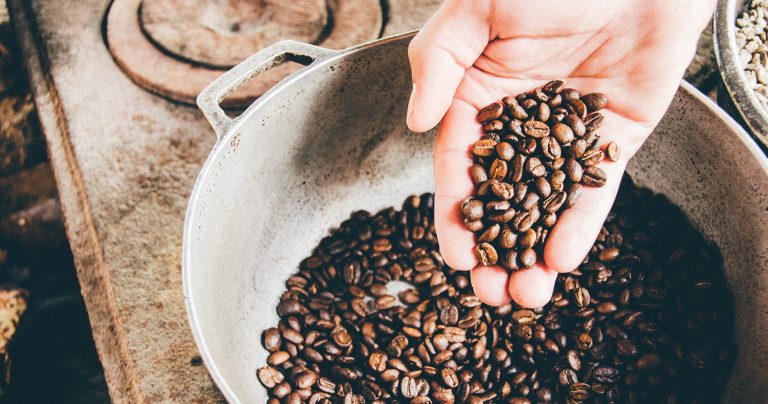Single-origin and coffee Blends – what’s the difference?
Alex | January 22, 2023

Great coffee is easy to find these days, as more people appreciate the pleasure of a smooth, refreshing coffee experience. But with so many options to choose from, it’s not easy to ‘know your beans’ about them all.
So what makes a better cup of coffee – a single-origin coffee or a blend? We explain the difference to help you find coffees that are right for you and your team at work.
Single-origin coffee
Single-origin simply means that the coffee beans come from just one specific producer, crop, region or country. They tend to have a more distinctive flavour, depending on the growing and processing conditions.
Lots of factors including botanical variety, soil, climate, altitude, and shade, for example, will influence flavour. Some coffee enthusiasts may favour single-origin coffee because of its purity and high quality. Plus they often tell a story about their provenance. Coffee purists might also recommend you drink single-origin coffee black with nothing added, to get its unique and uninterrupted taste.
However, single-origin coffees are rarer than blends. And some origins may only be available at certain times of the year due to geographical limitations. This is the case if single-origin coffee is sourced from say, a smaller farm that can’t produce high quantities. This can result in an intermittent supply of your favourite bean.
For these reasons, your single-origin coffee is a little more expensive than blends. You may also find that prices fluctuate considerably depending on the crop. So if you’re looking for a consistent coffee experience all year round for an office application, single-origin may not be best for you.
Coffee blends
A coffee blend is a mixture of coffee beans sourced from different places around the world and processed together. The aim is to create a unique expression of flavours, acidity, and body by taking the best qualities from different beans. When done correctly, this results in a perfectly balanced, more consistent brew.
Blends are not as overpowering as single-origins. And they tend to work well as the base of espresso-based drinks such as lattes and cappuccinos. This can particularly be the case where you have a mix of Robusta and Arabica. The Robusta gives body, whereas the Arabica can give more complex and delicate notes. You can read more about different coffee species here.
Mostly a blend will be a combination of two or three beans. But some may consist of seven or eight. It just depends on what flavours work together, and the application it’s being blended for.
Another benefit of a blend is greater price stability. A single-origin may be exposed to even small fluctuations in variables such as geographic conditions and crop success. Whereas a blend can often benefit from greater consistency when it comes to sourcing.
Which is better?
We hear this question a lot, but there really isn’t a right or wrong answer. Coffee comes down to personal taste. And you can be sure that any coffee from FreshGround will give you a premium quality, perfectly roasted cup in the office.
If you’re trying to decide which coffee is best for you and your team, just get in touch. Our team is Speciality Coffee Association trained, so we’ll happily help you define your coffee requirements. Please call us on 020 7553 7900 or contact us online for more information.